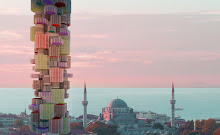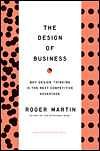As the presidential race continues to heat up, I think we have a politician, in Barack Obama, who has the ability to restore the lost faith of many in this country, and to help engage and bring together a world forcibly divided.
When your physical appearance is an ambiguous blend of colors and features; when you grow up amongst disparate cultural influences; and when your friends and family members represent every shade, every ethnic background – you learn very quickly to appreciate our common humanity and to draw from commonalities to build relationships while learning from differences. Ideally, maybe foolishly, I like to believe that is how all people of the world are or would like to operate.
9/11 shattered that dream for me on so many levels. I was living in New York City at the time, and the senseless destruction of my home hurt immensely. The beautiful skyline that I saw from my bedroom window in Brooklyn was changed forever. Witnessing such extreme violence and hatred so close to my home, tore at my soul. When everything is divided, broken down to ignorant extremes, us versus them, “with us or against us”, hate and senseless killing, there is no refuge for people like me.
For a moment in time after that horrible event, the entire world seemed somewhat united in their support of the US. There was anticipation amongst many people that this heartbreak could potentially be a trigger for the US to re-examine their foreign policies and to lead the world in tackling and eradicating the root of terrorism - extreme poverty, lack of education, opportunity and hope. The US government could have used the outpouring of support and unity to bring upon historic changes, to open dialogue and engage disparate people and countries.
Instead that opportunity was senselessly squandered. What has happened over the next six years in the hands of the Neo-Cons and the Bush administration only served to deepen and infect the wound. The healing that I searched for after 9/11 did not occur. Instead my disillusionment grew. The world, we live in now, is more divided and more hostile and unsafe, than I ever remember it. It seems like anyone, anywhere is a target. There is even more suffering and pain and even less hope. Ignorance and feelings of fear and desperation drive politics. The Bush administration continues to use bully tactics and flaunt the military as the cure all for the world’s ills.
Bush administration only served to deepen and infect the wound. The healing that I searched for after 9/11 did not occur. Instead my disillusionment grew. The world, we live in now, is more divided and more hostile and unsafe, than I ever remember it. It seems like anyone, anywhere is a target. There is even more suffering and pain and even less hope. Ignorance and feelings of fear and desperation drive politics. The Bush administration continues to use bully tactics and flaunt the military as the cure all for the world’s ills.
Over the past six years, I have come to accept my disillusionment as an unfortunate constant companion. But now, I have renewed sense of hope as Barack Obama has joined the run for the presidency. As a child, growing up in the US and globally, he received foreign policy training unlike any other politician. From a very young age, he has learned to reach out and connect with people from varied backgrounds and from diverse life experiences. Obama has learned to embrace disparate sides of his own heritage. Living in the in-between, racially and culturally, teaches the best life lessons on how to listen, to empathize and to unite. These are important skills to possess when you are trying to heal and lead an extremely polarized country. They are also critical for any leader in this globalized world, especially one guiding the most powerful country in the world. The next president of the United States has an incredibly daunting task before him or her. We need a leader who can address the plight of all people, regardless of class, skin color, or ethnicity, who can build consensus and develop holistic solutions and thus a better future.
I have spent too many years burrowing my head in the ground, trying not to consider the deep dark abyss, the Bush administration has lodged this country, hoping this nightmare will soon be over – and I think with Barack Obama it just might.

 by Khalid ben Slimane (Tunisia). He studied pottery in Tunis, Spain and Japan.
by Khalid ben Slimane (Tunisia). He studied pottery in Tunis, Spain and Japan. Heech "Nothing" by Parviz Tanavoli (Iran) 2006
Heech "Nothing" by Parviz Tanavoli (Iran) 2006 "Samira's Story" by Fathi Hassan (Egypt) 1995
"Samira's Story" by Fathi Hassan (Egypt) 1995












































.JPG)





























